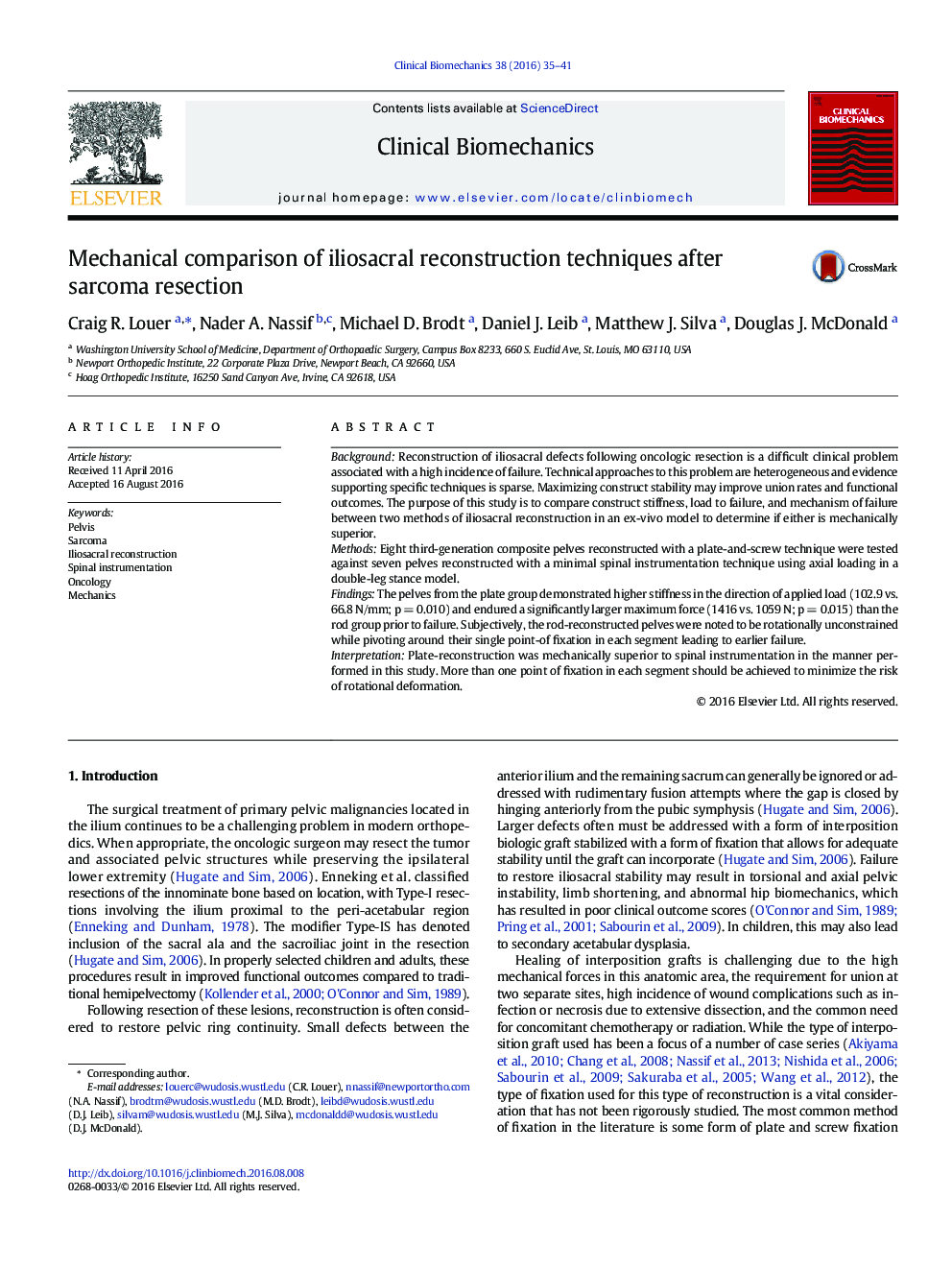| Article ID | Journal | Published Year | Pages | File Type |
|---|---|---|---|---|
| 4050054 | Clinical Biomechanics | 2016 | 7 Pages |
•Plate-and-screw constructs performed better than spinal instrumentation constructs.•A single point-of-fixation in each segment predisposes to rotational displacement.•Increased motion through the defect resulted in failure at the pubic symphysis.•Implant-bone interface, not implant strength, chiefly defines construct stability.•Reconstructive techniques should prioritize quality sacral and iliac fixation.
BackgroundReconstruction of iliosacral defects following oncologic resection is a difficult clinical problem associated with a high incidence of failure. Technical approaches to this problem are heterogeneous and evidence supporting specific techniques is sparse. Maximizing construct stability may improve union rates and functional outcomes. The purpose of this study is to compare construct stiffness, load to failure, and mechanism of failure between two methods of iliosacral reconstruction in an ex-vivo model to determine if either is mechanically superior.MethodsEight third-generation composite pelves reconstructed with a plate-and-screw technique were tested against seven pelves reconstructed with a minimal spinal instrumentation technique using axial loading in a double-leg stance model.FindingsThe pelves from the plate group demonstrated higher stiffness in the direction of applied load (102.9 vs. 66.8 N/mm; p = 0.010) and endured a significantly larger maximum force (1416 vs. 1059 N; p = 0.015) than the rod group prior to failure. Subjectively, the rod-reconstructed pelves were noted to be rotationally unconstrained while pivoting around their single point-of fixation in each segment leading to earlier failure.InterpretationPlate-reconstruction was mechanically superior to spinal instrumentation in the manner performed in this study. More than one point of fixation in each segment should be achieved to minimize the risk of rotational deformation.
